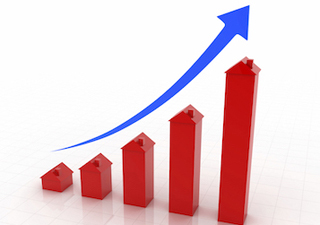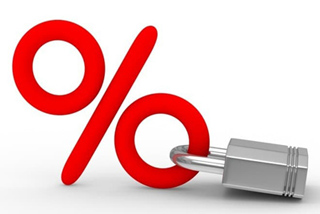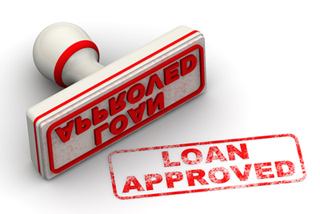Quote of the Week
“Areas that offer buyers something different are proving magic drawcards for buyers to move. It might be quality inland areas with plenty of infrastructure or places on the coast. It’s a real trend of sea and tree change that we were seeing already, but the pandemic has accelerated that.”
Domain senior research analyst Nicola Powell
Prices Continue To Rise In October
 Real estate prices continued to defy the pandemic recession in October, with the latest CoreLogic data showing that 13 of the nation’s 15 market jurisdictions delivering growth in their median house prices.
Real estate prices continued to defy the pandemic recession in October, with the latest CoreLogic data showing that 13 of the nation’s 15 market jurisdictions delivering growth in their median house prices.
Seven of the eight capital cities (all except Melbourne) recorded house price growth in October, as did six of the seven state regional markets (all except Regional South Australia). The national average was a 0.5% rise in house prices, with combined regional (up 0.9%) outperforming the combined capitals (up 0.4%).
This follows a similarly bullish result during September and confirms the figures published last week by Domain, which found that every capital city except Melbourne produced house price growth in the September Quarter.
In annual terms, all eight capital cities have house prices higher than a year ago, led by Canberra (up 7.3%), Sydney (up 7.2%) and Hobart (up 6.9%). Darwin, Brisbane and Adelaide have all had annual growth in the 4-5% range.
But the leading market jurisdiction for annual growth in house prices is Regional Tasmania, up 10%. Regional NSW and Regional Queensland have also done well, both rising about 6%.
Investors Wake Up To Emerging Boom
The many strong property markets around Australia have been uplifted primarily by owner-occupiers, including first-home buyers – but the latest loans data suggests that investors are starting to join the buying trend.
The number of property investor loan commitments has returned to pre-pandemic levels, according to figures from the Australian Bureau of Statistics. The ABS Lending Indicators for September indicates that more than $5 billion of new investor loan commitments were recorded that month – a similar value to February 2020 before the onset of the pandemic impact.
The number of investor loan commitments also increased 5% in September, after recording a monthly rise of 9% in August, according to the ABS.
Real estate professionals across Australia report rising activity from investors who are increasingly aware of strong markets, with rising prices and very low vacancy rates, particularly in regional Australia and the smaller capital cities.
Aussies Have Saved $100bil In 7 Months
 Australians have amassed $115 billion in total savings as a buffer against the pandemic recession, in a sign that economic recovery is unlikely to be derailed by any future reduction in government income support.
Australians have amassed $115 billion in total savings as a buffer against the pandemic recession, in a sign that economic recovery is unlikely to be derailed by any future reduction in government income support.
APRA figures show household deposits surged to $1.09 trillion by the end of September – an increase of $115 billion in 12 months and a $99.5 billion increase on deposit levels in February, before the pandemic took hold.
NAB director of market economics Tapas Strickland says that, just as the tens of billions in emergency support helped soften the virus recession, the savings amassed recently will help households navigate any drop-off in income payments over coming months.
There is mounting optimism the economy is recovering after a 7% contraction in the June Quarter. RBA deputy governor Guy Debelle said last week he expected the economy to have grown in the September Quarter, which technically would end of the pandemic recession.
Surveys show that, outside Victoria, consumer confidence has staged a dramatic recovery to sit at pre-pandemic levels.
Auctions Hit Highest Level Since March
 There were 1,757 homes auctioned across the combined capital cities last week, up from 1,427 the previous week and 1,555 this time last year. The preliminary clearance rate was 77%.
There were 1,757 homes auctioned across the combined capital cities last week, up from 1,427 the previous week and 1,555 this time last year. The preliminary clearance rate was 77%.
This compares with a preliminary clearance rate of 76% the previous week, revised down to 67% at final figures. Last week’s figure was the highest preliminary clearance rate recorded since the week ending 1 March (77%).
Melbourne was host to 604 auctions last week, increasing from 490 over the previous week and 255 this time last year. Of 530 results collected, 76% were successful, increasing on the previous week’s preliminary clearance of 72%, which revised down to 64% by final data.
In Sydney, 864 homes were taken to auction last week, increasing from 700 over the previous week and 843 this time last year. The preliminary clearance rate held reasonably firm at 79%, while the previous week recorded a preliminary clearance rate of 80%.
Across the smaller cities, Canberra recorded the highest preliminary clearance rate at 82%, followed by Adelaide with 77%.
Official Rate At 0.1% For 3yrs
 The Reserve Bank says it will to keep its official cash rate at 0.1% for the next three years and will buy $100 billion of bonds to force cheaper bank lending to boost jobs recovery.
The Reserve Bank says it will to keep its official cash rate at 0.1% for the next three years and will buy $100 billion of bonds to force cheaper bank lending to boost jobs recovery.
RBA governor Philip Lowe announced a $5 billion-per-week buying program, along with a suite of lower rates for bank funding, while also upgrading forecasts for economic growth from 4% to 6% by June next year.
“The lower interest rates and our plan to buy $100 billion of government bonds over the next six months will help people get jobs and support the recovery of the Australian economy,” Lowe says.
The RBA also lowered the interest rate it charges commercial banks on loans through its $200 billion Term Funding Facility from 0.25% to 0.1% – and lowered its target on yields for the 3-year bond – a benchmark borrowing rate for banks and business – from 0.25% to 0.1%.
Lowe expects the banks to pass on the lower rates but says such reductions may come through negotiating and switching loans. Treasurer Josh Frydenberg says he too expects the banks to pass on the cheaper funding but is more cautious about how much and when.





